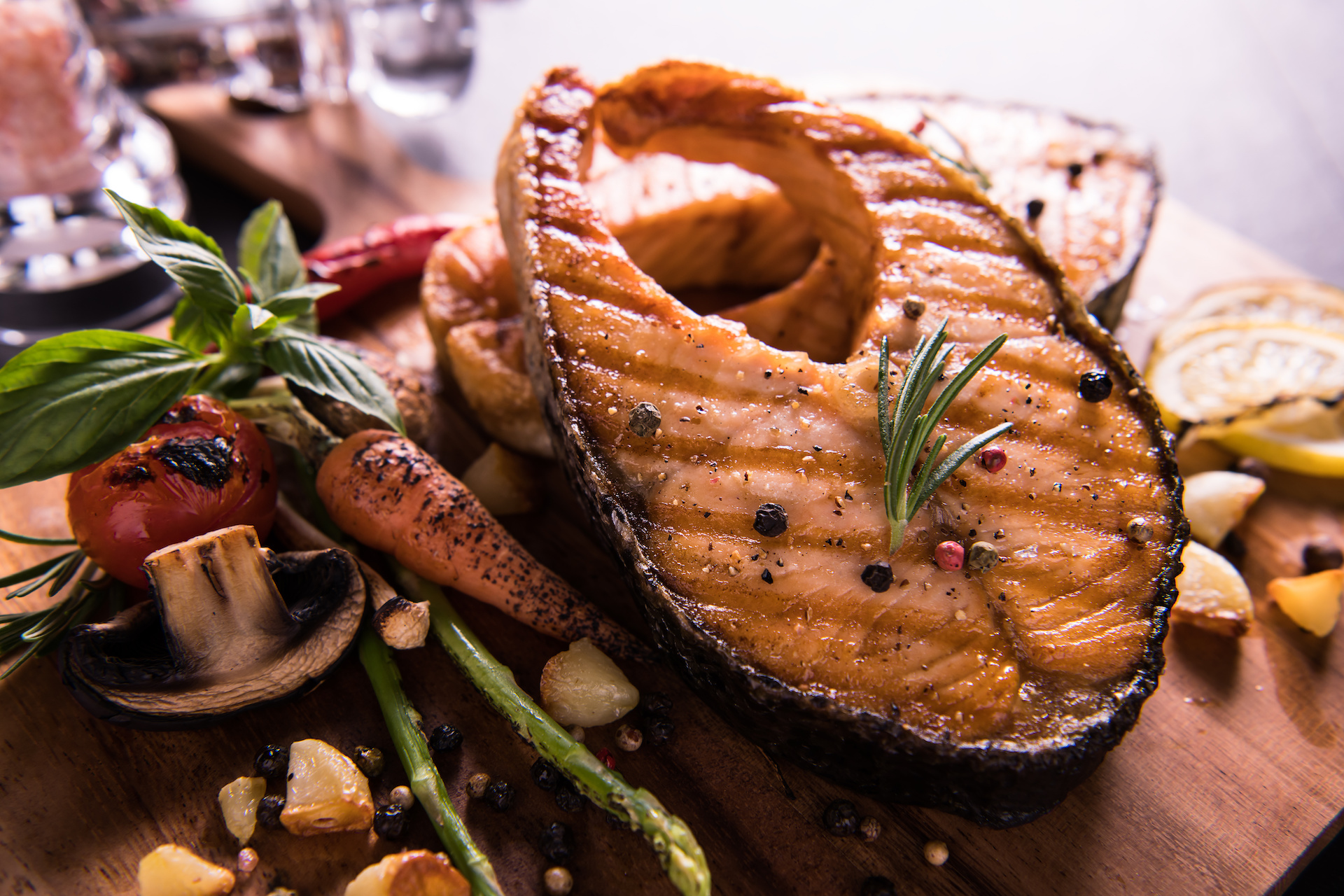
Sweet, sweet summer is on its way. That means lazy days, fired-up grills, and al fresco dining. It also opens the door for plenty of mistakes to be made when cooking and entertaining.
When it comes to grilling fish, there are many things that people do wrong. Frankly, the makeup of fish is not quite like other grill-ables such as chicken, pork, or steak. That said, they behave a bit differently on the grill, whether it’s charcoal or gas. So we reached out to an expert in the field to point them out, setting you up for better salmon, halibut, and grouper dinners this grilling season.
Rima Kleiner is a registered dietician and blogger at Dish on Fish. She’s a member of the Academy of Nutrition and sings the many health praises of seafood, not to mention to dynamic range of flavors and styles. Here are the top five mistakes she says people make when grilling fish.
Not prepping your fish for the grill

“Whether you choose to marinate or not, preparing your seafood with a rub or marinade before grilling will deliver big in the taste department,” Kleiner says. “Even something as simple as a salt rub or basic marinade of olive oil, lemon, herbs and salt (which is my fallback when grilling fish!) will help to lock in taste.”
Don’t shy away from something a little more complex either, like a marinade involving some powerful citrus-like yuzu. And make that fish all the better with a good side when the time comes, like mango salsa or grilled asparagus with lemon.
Not cleaning the grill prior to cooking

“Cooking seafood—or any food—on a grill that hasn’t been cleaned likely means your food will pick up the burnt taste of the food cooked on the grates before,” Kleiner says. “For the best tasting grilled seafood, gently scrape the grates before or after heating (though cleaning after heating may help dislodge stubborn burnt pieces).”
Think of it in terms of relativity, which is a great way to look at most things involving food. Just as improperly stored food items in your fridge and affect the flavors of other leftover items in there, what was previously on your grill and impart unwanted flavors to what you’re presently cooking. Start clean; that’s the way to go.
Not oiling or preheating the grill properly

“Just like oven cooking, you’ll get the most evenly, best-tasting food when the grill has been preheated,” Kleiner says. “Let the grill heat up for about ten minutes, then oil with a high-smoke point oil (avocado oil works well) to help prevent the food from sticking.”
Starting to early can dry seafood out or result in a fish that’s partially cooked in one area and fully cooking in another. Also, keep in mind where the major heat spots are on your grill and lay your proteins out accordingly.
Not grilling skin-side down

This one is pretty easy to remember, as there isn’t much wiggle room. “If your seafood has skin on it, grill with the skin side down,” Kleiner says. “And let it cook until almost done before flipping to prevent sticking.” Being a little more patient here will allow for a nice, clean release when it’s time, not to mention a crispy and delicious skin layer.
Not cooking for the right amount of time

While adequate cooking time depends on the species, a good rule of thumb to keep in mind when cooking fish is to grill ten minutes for every inch of thickness,” Kleiner says. “If your fish is about one inch thick at the thickest part, cook for about ten minutes (and don’t flip until at least halfway through the cooking time). If your fish is one-and-a-half inches at its thickest, grill for about 15 minutes and so on.”
With the above in mind, fish grilling season will certainly be a more enjoyable and flavorful affair. Also keep in mind the seasonality of seafood and chat up your local fishmonger or seafood specialist. If you happen to live near the sea, all the better. If not, there are still great ways to get fresh seafood online.
Grilling whole fish is always fun and can be a show-stopped when hosting a meal. We suggest smaller salmon species, sea bass, trout, or red snapper. But play around and see what’s available locally in your neck of the woods.
Hungry? Us too. Check out our guides on pairing seafood and wine and how to clean a fish. Your grilling game is about to improve a notch or two.


